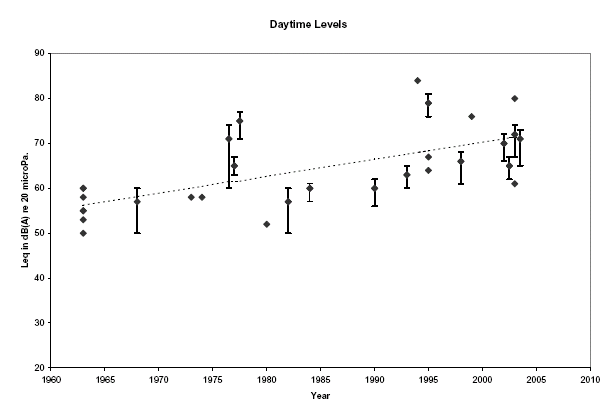James E. West jimwest@jhu.edu and Ilene J.
Busch-Vishniac (ilenebv@jhu.edu)
Johns Hopkins University
3400 N. Charles Street
Baltimore, MD 21218
Popular version of paper 3aNCa1
Presented Wednesday morning, October 19, 2005
ASA/NOISE-CON 2005 Meeting, Minneapolis, MN
The importance of noise in health care has been recognized for years but little work has been done to characterize and reduce hospital noise even though it routinely ranks among the top complaints of hospital patients, visitors and staff. There are a small number of hospital noise surveys in the scientific literature. This body of literature suggests that a significant problem exists, and that it is generally getting worse rather than better, even in new construction.
Noise in hospitals is important for a number of reasons in addition to the obvious issue of annoyance. There is evidence that the high sound levels in the hospital contribute to stress and burn-out in hospital staff. Further, there is some evidence that noise negatively affects the speed of wound healing. Additionally, there is legitimate concern that hospital noise could negatively affect speech communication and cause increased numbers of medical errors.
We reviewed the literature carefully to enable us to answer the following basic questions: Is there any indication that hospital noise levels are changing over time? Do hospital noise levels vary dramatically from hospital to hospital? Do hospital noise levels vary significantly with type of unit?
The graph below shows the results of our compilation of existing noise studies by showing the A-weighted equivalent sound level as a function of the year of publication of the study. A-weighting corrects for the pitch response characteristics of humans, and equivalent sound pressure levels are the sound levels that would be produced if time-varying sound instead had a constant level producing the same total sound energy.

There are three interesting points raised by this literature survey. First,
not one published result shows a hospital which complies with established standards
for hospital noise. These standards were developed to define maximum noise levels
commensurate with health care purposes. Most of the data, particularly that
which is recent, shows sound levels 20-40 dB(A) higher, i.e. 2 - 4 orders of
magnitude more energetic than the standards suggest. Second, there is a clear
trend for rising hospital noise levels consistently since 1960. A straight line
fit to the data (included in the figure) shows an increase, on average, of 0.38
dB per year for daytime levels. Thus, the situation has been steadily worsening.
Third, the figure shows remarkably little variation given that the results are
for widely different sorts of hospitals (major research facilities to community
hospitals) located throughout the world. This suggests that the problem of hospital
noise is universal, and that noise control techniques might also be expected
to be applicable broadly.